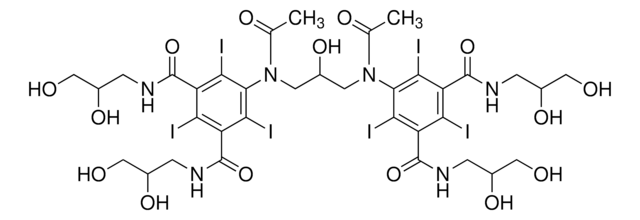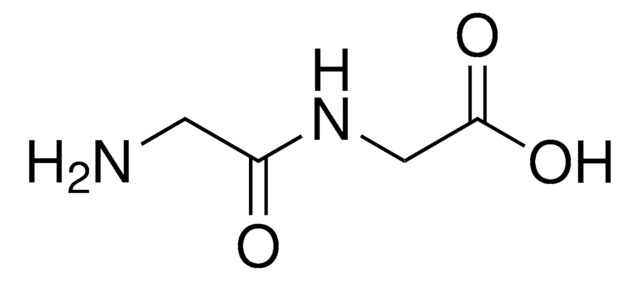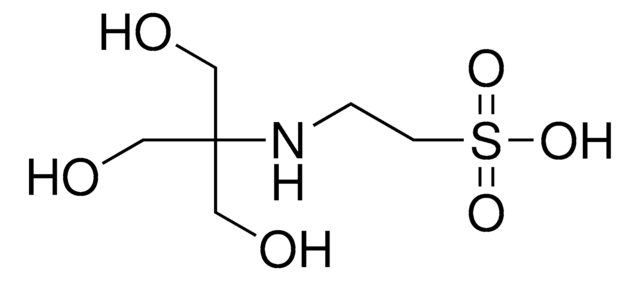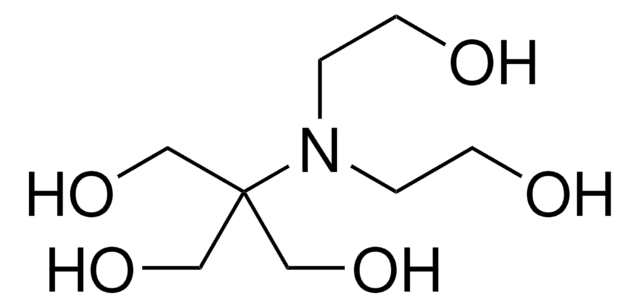T5816
Tricina
BioPerformance Certified, suitable for cell culture, ≥99% (titration)
Sinônimo(s):
N-[Tris(hidroximetil)metil]glicina
About This Item
Produtos recomendados
Nível de qualidade
grau
BioPerformance Certified
Ensaio
≥99% (titration)
forma
crystalline powder
condição de armazenamento
dry at room temperature
técnica(s)
cell culture | mammalian: suitable
Impurezas
endotoxin and total aerobic microbial count, tested
cor
white
faixa de pH útil
7.4-8.8
pKa (25 °C)
8.1
pf
187 °C
traços de cátion
heavy metals (as Pb): ≤5 ppm
absorção
≤0.02 at 290 at 20%
aplicação(ões)
diagnostic assay manufacturing
general analytical
life science and biopharma
sample preparation
cadeia de caracteres SMILES
OCC(CO)(CO)NCC(O)=O
InChI
1S/C6H13NO5/c8-2-6(3-9,4-10)7-1-5(11)12/h7-10H,1-4H2,(H,11,12)
chave InChI
SEQKRHFRPICQDD-UHFFFAOYSA-N
Procurando produtos similares? Visita Guia de comparação de produtos
Descrição geral
Aplicação
Características e benefícios
- Suitable as a Buffer component, for Electrophoresis and Protein separation
- Effective Buffering from pH 7.4-8.8 (25 °C) with a pKa of 8.1 (25 °C)
- Tested for Endotoxins and Total Aerobic Microbial Count
- Tested to confirm low levels of heavy metal contamination, ensuring suitability for various applications
Outras notas
Código de classe de armazenamento
13 - Non Combustible Solids
Classe de risco de água (WGK)
WGK 3
Ponto de fulgor (°F)
Not applicable
Ponto de fulgor (°C)
Not applicable
Equipamento de proteção individual
Eyeshields, Gloves, type N95 (US)
Certificados de análise (COA)
Busque Certificados de análise (COA) digitando o Número do Lote do produto. Os números de lote e remessa podem ser encontrados no rótulo de um produto após a palavra “Lot” ou “Batch”.
Já possui este produto?
Encontre a documentação dos produtos que você adquiriu recentemente na biblioteca de documentos.
Os clientes também visualizaram
Nossa equipe de cientistas tem experiência em todas as áreas de pesquisa, incluindo Life Sciences, ciência de materiais, síntese química, cromatografia, química analítica e muitas outras.
Entre em contato com a assistência técnica







